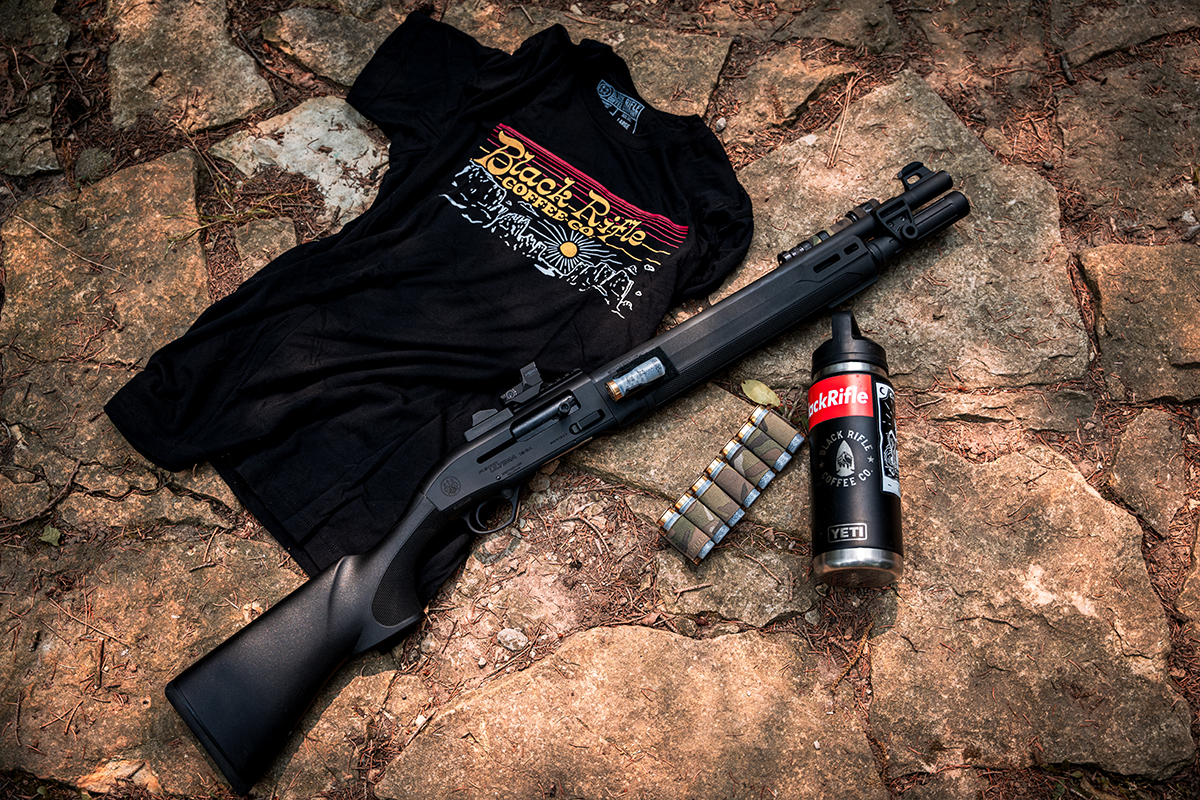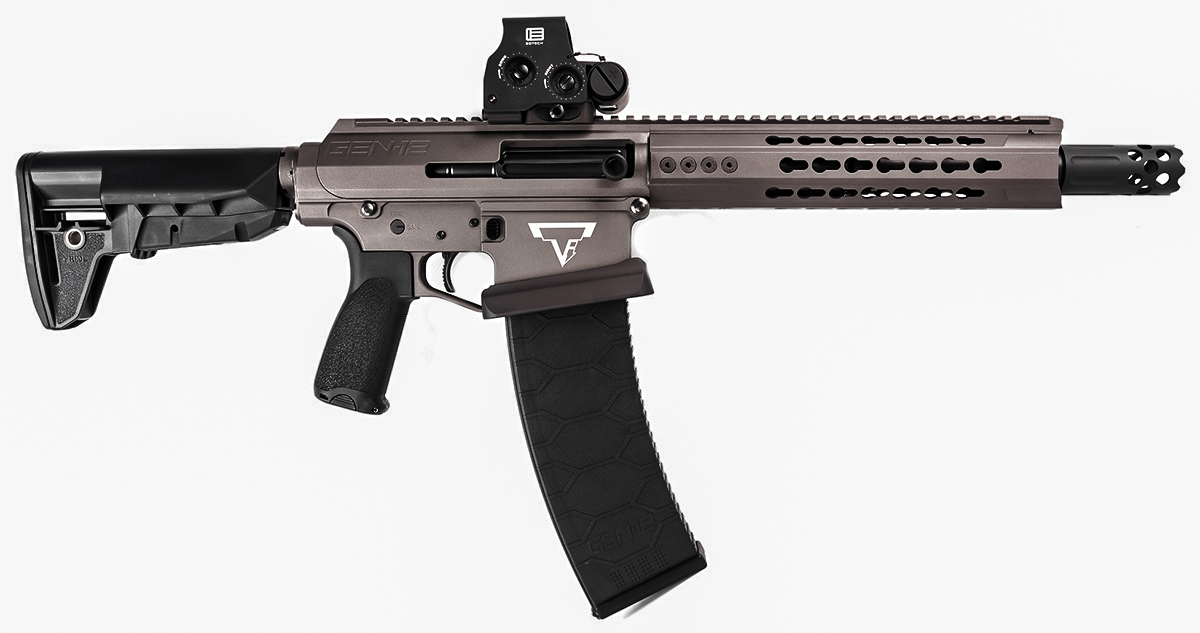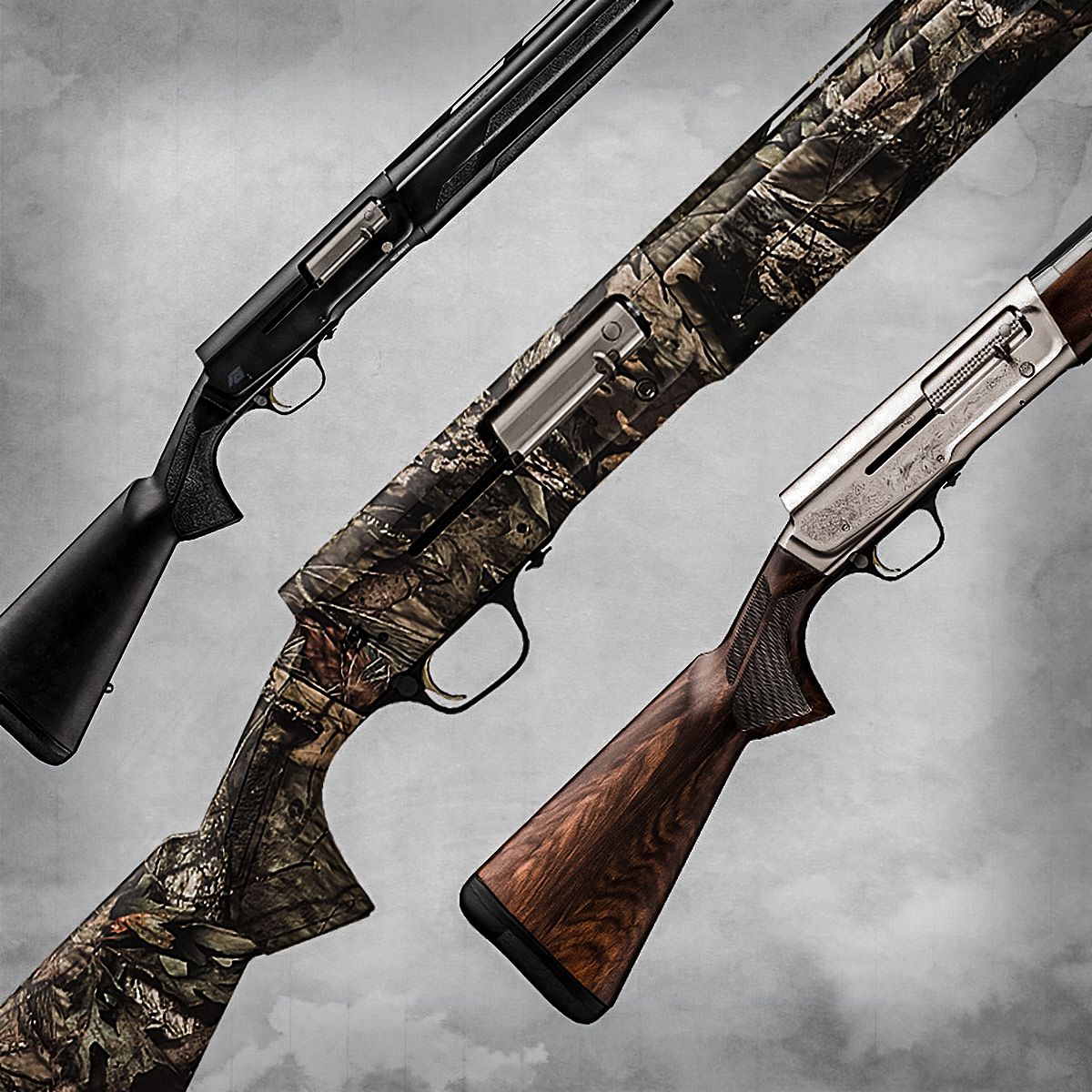John Moses Browning is a name that most gun enthusiasts know well. He had such an impact on the firearms designs of yesteryear that many of them are still serving sportsmen and militaries around the globe. One of Browning’s biggest claims to fame is the automatic shotgun.
Capable of firing one shot after another with each pull of the trigger, the automatic shotgun was revolutionary. Today, nearly every major shotgun manufacturer offers one or multiple options.
While making a semi-automatic shotgun may seem relatively simple now, in Browning’s day, it was no easy feat. Browning’s Auto-5 design — the first commercially successful semi-auto shotgun — had no serious competition for almost 50 years! Bulletproof patents and the design of the shotgun shell itself kept potential challengers at bay.

RELATED — The Best Home Defense Gun: Shotgun, Carbine, and Handgun Guide
What Is an Automatic Shotgun?
An “automatic shotgun” is a shotgun capable of firing one round with every pull of the trigger — they’re also called autoloaders and semi-auto shotguns.
By that description, they are semi-auto firearms, so why the name weirdness? Simply put, the automatic shotgun was invented before we had the terminology we have today.
Many early semi-auto rifles and pistols were also referred to as “automatics” because the user didn’t have to work an action or cock a hammer, and that term stuck for a good long while.
The automatic shotguns we’re talking about here are not fully automatic, or full auto. There are a few select-fire shotguns, the most famous being the AA-12 combat shotgun, which has been adopted into the pop culture psyche thanks to the endless series of Call of Duty video games. It’s also gotten some healthy screen time in movies due to its unique looks and the spectacle of firing off a drum of 12-gauge shells in full auto.

There are so few full auto shotguns because they have a specific and limited tactical use case. Also, like any other full-auto firearm, they are wildly expensive and require a ton of ATF paperwork and approvals. (A company flirted with introducing a semi-auto version of the AA-12 to the U.S. market a few years ago, but ultimately the feds said it would be too easy to convert to full auto and wouldn’t approve it for sale.)
When fired, an automatic/semi-auto shotgun uses recoil or gas energy, depending on the design, to work the action, which ejects the spent shell and loads the next with every trigger pull.
Despite the term “automatic,” these semi-auto firearms still require the shooter to pull the trigger for each shot.

A truly automatic shotgun differs from most shotguns on the commercial market in that pulling the trigger and holding it back results in continuous firing until the trigger is released or the shooter burns through all the available ammo.
These guns are extremely uncommon, as they require jumping through elaborate (and expensive) red tape hoops to purchase them. Despite the automatic features, semi-automatics use nearly identical components, and the designs aren’t really all that different.
GOOD GEAR – Embody the Ethos of the Quiet Professional With the BRCC Silencer Smooth Roast
How an Automatic Shotgun Works
In his book Shotguns By Keith, Elmer Keith said, “They are very efficient guns from every viewpoint.”
The design of the automatic shotgun can be broken down into three different operating mechanisms: recoil, gas, and inertia.
Recoil-Operated Shotguns
A recoil system harnesses the energy of the gun’s recoil to perform reloading, readying it for the next shot. Most modern semi-auto handguns use recoil-operated systems.

Pro: Recoil-operated guns run very clean and, when tuned, are very reliable.
Con: Sometimes they rely on various friction ring setups to run reliably.
Gas-Operated Shotguns
Gas operation is something most shooters are familiar with today, thanks to guns like the AR-15 and AK-47. These systems use the gas created by burning propellants inside the cartridge to cycle the action. However, reliable gas-operated shotguns were only possible once shotshell technology became more consistent.

Pro: Gas guns have a lighter recoil impulse than most others.
Con: They run dirty, and reliability varies depending on the ammunition used. They rarely function well with low-pressure target loads.
Inertia Guns
Inertia is the last of the three primary operating mechanisms for automatic shotguns. While inertia guns technically could be classified under recoil operation, they deserve some of their own recognition. Inertia-driven guns use inertia for cycling the action. When recoil moves the gun backward, the internal rotary bolt remains stationary. A spring inside the bolt compresses, then pushes the bolt back after the shot, ejecting the spent hull on the backstroke. The spring then pushes the bolt forward, loading a fresh shell into the chamber.

Pro: Inertia guns are typically very reliable and require very little maintenance.
Con: They are the most expensive on the market because they are complex to manufacture.
RELATED — Military Shotguns: The History of Scatterguns Issued by the U.S.
The Problem With Shotgun Shells
The automatic shotgun has been around for more than a century and continues to be relied upon by people worldwide. While many advancements have been made in technology and materials, the primary function of the automatic shotgun has remained unchanged. Shotshell technology had a much more vital role in the autoloader’s evolution.
You can’t grasp the evolution of the automatic shotgun without a basic understanding of shotgun shells and their history. The shotgun shell is geometrically clunky and a miserable thing to get to feed correctly.
Lacking the sloping shoulders of most centerfire rifle cartridges, the standard shotshell’s flanged rim made marrying shotgun shells and automatic feeding and firing mechanisms challenging for engineers. In addition to their square geometry, there was very little standardization among shotshells early on, which made a reliable auto-loading scattergun practically impossible.

Shotgun shells are relics of the black-powder era and have been relatively unchanged since the first fully contained cartridges popped onto the scene. Gauges have come and gone, with only the best surviving into the modern era.
Gauges were named in a way that makes little sense to most modern shooters. The gauge is equal to the number of lead balls the size of the bore it takes to equal one pound. The lower the numerical gauge, the bigger the payload.
In addition to the various bore sizes, each gauge had shotshells of multiple lengths, each holding more or less powder and shot.
In 1916, Winchester listed seven different shotgun shell lengths for the 12-gauge alone. In comparison, only three standard sizes (2 3/4-, 3-, and 3 1/2-inch) are found today. Each shell length had different powder charges and shot weights, making tuning a gas-operated autoloader nearly impossible. This is why Browning’s recoil-operated design was king for many years.

The construction of early cartridges was also a mixed bag. Before Remington introduced the first plastic shotgun shell in 1960, manufacturers primarily used full-length brass cases and combinations of a brass head and paper body.
Once the plastic shotgun shell became the standard, more autoloaders began to hit the market. The enhanced reliability of the plastic shotgun shell made these new designs possible.
The shotgun shells we know and love today are a major improvement over those manufactured in 1900, when Browning developed his iconic Auto-5. It is no secret that firearms evolution follows cartridge development. The same can be said for the autoloading shotgun as new designs developed and the ammunition improved.
GOOD GEAR – Keep Your Coffee Hot or Cold With the BRCC YETI Reticle Rambler Mug
Iconic Auto Shotguns

The history of the automatic shotgun can’t be discussed without the Browning Auto-5. The Auto-5 is a recoil-operated semi-automatic shotgun developed by John Browning and introduced in 1902 by Fabrique Nationale (FN). It had an excellent reputation and remained in production from 1903 to 1999.
The Auto-5 is also the gun that ended the long relationship between John Browning and Winchester. After two years of Winchester sitting on the design without action, John Browning said, “We’re letting the best thing I ever made die in its sleep.”

The Remington 1100 is an iconic gas-operated gun that has proven its reliability even in the worst conditions. Introduced in 1963, the Model 1100 would become one of the most popular auto loading shotguns throughout the 1960s and ’70s, accounting for 60 to 70% of the shotguns used at major skeet events, according to Roy Marcot in Remington: America’s Oldest Gunmaker.
The Remington 1100 was not only very user-friendly, but it was also easy to maintain and clean. The 1100 quickly became a favorite of turkey, waterfowl, and upland hunters across the United States. Throughout its production, more than 4 million were manufactured.
It used a long recoil operation in which the whole barrel would move rearward the length of the shell with each shot. This proved a very reliable shotgun, even with the mixed bag of shotgun shells available when it first hit the market. It also went by the name Remington Model 11, Savage Model 720, and Savage Model 745.

The Benelli M2 is an inertia-driven shotgun that will function in the worst conditions imaginable. Benelli is well-known for its inertia designs, and this one is the most affordable to the consumer.
The M2 is lightweight and very clean shooting, requiring very little maintenance. Available in 12- and 20-gauge, the M2 is perfect for any hunting scenario. The Benelli-made inertia shotguns continue to be the shotgun everyone wants to have in the duck blind.
RELATED — Triple Barrel Shotgun: Novelty or Practical Firearm?
Fully Automatic Shotguns
AA-12

By far the most famous full-auto shotgun out there, the AA-12 is something straight out of a sci-fi movie. Introduced in 1972, it is completely encased in polymer and most often seen feeding 12-gauge shells from a large drum magazine. It doesn’t fit the traditional look of a shotgun. Using an open-bolt design, the AA-12 chugs along at 350 rounds per minute, making those 32-round drums empty pretty quickly.
Remington 7188

The Remington 7188 is essentially a full-auto Remington 1100 and is unique in that only a handful were ever made. Designed for the U.S. Navy Seals in Vietnam, it uses the standard tube magazine found on most shotguns today. While it only held eight shells, it had a slightly higher rate of fire than the AA-12, at 480 rounds a minute.
GOOD GEAR – Launch Your Mornings Into Orbit With the BRCC Space Bear Roast
What’s Next for the Automatic Shotgun?
The automatic shotgun has cemented itself into the sporting culture of America and will continue to be manufactured and sold for years to come.
Every year, major manufacturers such as Benelli, Beretta, and Browning release and sell new models. There are also a plethora of other used options available that still do the job.
READ NEXT — What Makes a Tactical Shotgun ‘Tactical’?










Comments